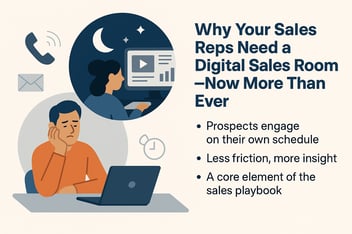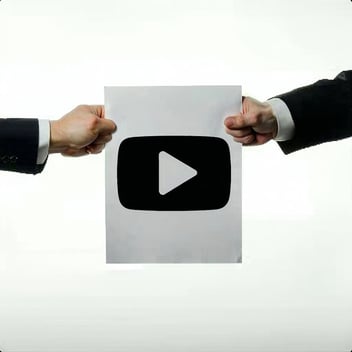
The Silent Seller: Why Digital Sales Rooms Are Now Essential in B2B Sales
Why Your Sales Reps Need a Digital Sales Room—Now More Than Ever
In today’s B2B environment, sales...
The way software companies have been marketing and selling for the past 30 years has to change. CAC costs are rising. % of no decision deals is increasing. On average, barely 50% of reps are meeting or exceeding quota.
Why is this happening? Simply put because the expectations of our buyers and the approach we take as sellers are mismatched. What is going on?

To start, B2B buyers collect information about software companies from a variety of channels – not just a sales rep anymore. Today, software companies only get about 17% in total of the software buyers’ time. If three companies are in consideration that means you only get about 6% of their time!
The reality is buyers no longer accept software companies’ controlling the stages of the sales process and reject the use of gates – consider that abandon rates on request a demo CTAs is over 85%. And the idea that we really know the buyers’ journey for each customer is unrealistic. Software buyers have access to multiple channels – websites, social, crowd sourced evaluations. Therefore, with so many sources of information, engagement with the seller typically starts much later in the buying process and our buyers establish strongly held opinions long before talking to us.
The software seller’s challenge:
Clearly the old way of doing things – with the software provider and sales rep controlling every step and disseminating content is not addressing these challenges. A good example is the product demo. Software buyers do not want to wait on us to be guided through a long product demo. So clicking on See a Demo and getting a form is not meeting buyer’s expectations and certainly is not a good way to build trust. Consider that to build trust, you have to show trust – meaning respecting the independence today’s software buyer craves.
The software seller’s reality:

Are you convinced you might need to try a different approach? One that stops putting so much emphasis helping marketing and sales sell and starts focusing on helping your buyers buy? Put yourself in the position of the software buyer. What is the experience you would want? What would help you not only learn, but also gain trust.
What we hear and read is loud a clear. Buyers want a digital-first experience. They want it to be provided in convenient, self-service manner that allows them to easily find answers to their questions and search out topics. Paging through resource libraries or YouTube collections is not the answer. But it is what software companies are making buyers do!
Are you ready to trust your buyer? Because if they like what they see, if its authentic and they feel your company and solution are a good fit, they won’t just raise their hands, they will wave their hands widely to get your attention! Stop measuring marketing by form fills and registered leads – it is completely counter to what your buyers want.
The path to buyer enablement begins by:
Learn How Buyer Enablement compares to Supplier Enablement
The business case for buyer enablement:
And these are quantifiable benefits.
On the engagement side, our customers see longer visits (7+ minutes) and more activity per visit (3.9 watched events). They also are getting more meetings with executive sponsors and re-engaged on stalled deals.
On the revenue side, we have seen a customer triple the amount of revenue from one quarter to the next resulting in 20X ROI by implementing buyer enablement!
Are you ready? Learn more here.

In today’s B2B environment, sales...
.jpg?width=352&name=Case%20Study%20(7).jpg)
According to a recent index of...

